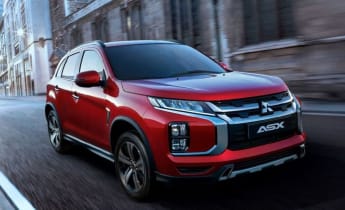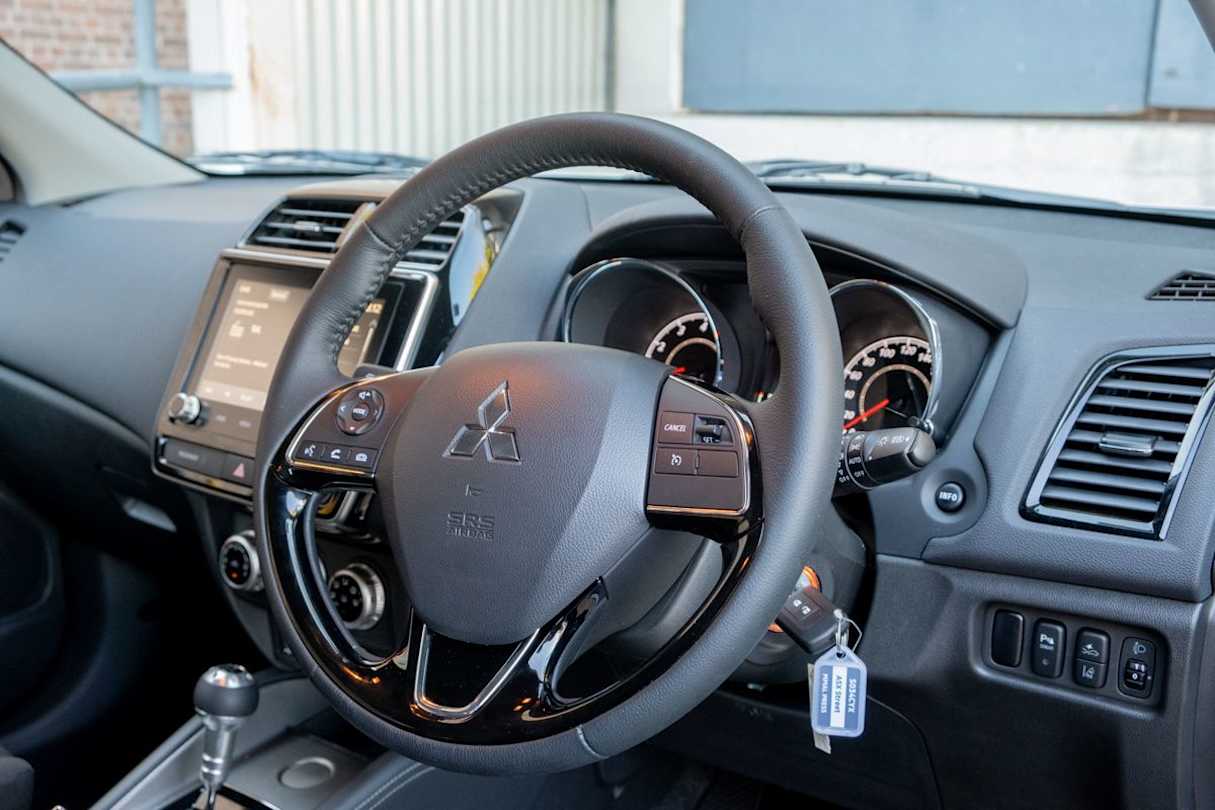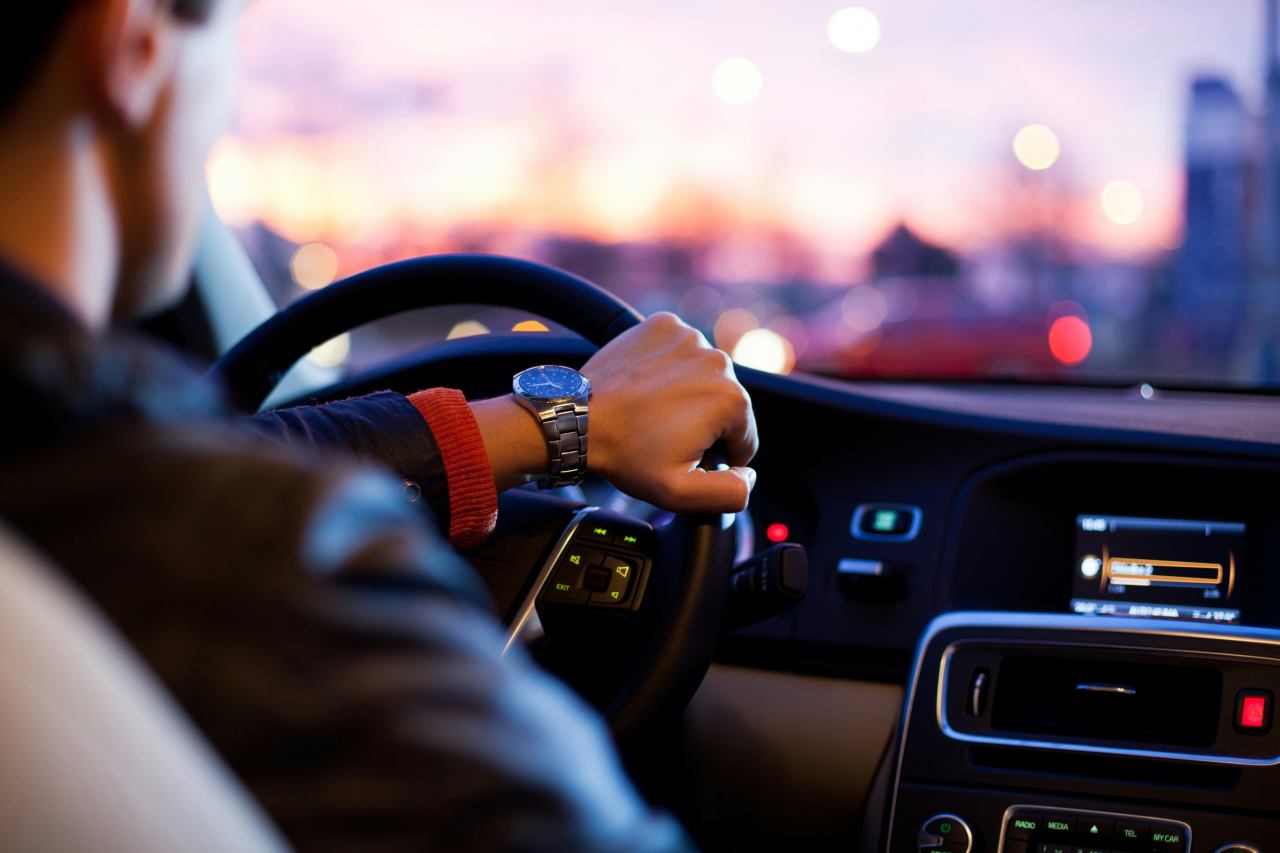The Mitsubishi ASX is one of the oldest new vehicles on sale, yet remains a persistent favourite with Australian buyers.
After launching in 2010 the ASX has had multiple facelifts and model-year updates, the latest of which brings the ES Street pack we have on test.
It is based on the ES variant that sits one up from the base GS. It uses a 2.0-litre petrol four-cylinder paired with a CVT automatic – pretty standard stuff – with some extra glossy lipstick thrown on top.
Visually, the Street stands out from your average ASX, but is the rest of the package good enough to fend off a flotilla of newer rivals?
Mitsubishi ASX 2024: ES (2WD)
| Engine Type | Inline 4, 2.0L |
|---|---|
| Fuel Type | Unleaded Petrol |
| Fuel Efficiency | 7.6L/100km (combined) |
| Seating | 5 |
| Price From | $24,530 - $30,250 |
| Safety Rating |
|
Price and features – Does it represent good value for the price? What features does it come with? 6/10
6 / 10
The regular Mitsubishi ASX ES starts at $27,990 (before on-road costs) and the Street accessory pack adds $2500 to be around $32,300 on the road.
That makes it quite a lot dearer than newer Chinese rivals such as the GWM Haval Jolion Premium ($26,990), MG ZST Core ($25,490) and Chery Omoda 5 FX ($27,990), all national drive-away prices.

The ES Street is equipped with LED headlights and daytime running lights, 18-inch alloy wheels finished in black with matching door handle covers, exterior trim pieces, a tailgate protector and a rear spoiler.
Inside, you get climate control, sill scuff plates, Street pack-specific leather and aluminium shift knob, polyurethane steering wheel, rear parking sensors, cruise control, an auto-dimming rear-view mirror and power mirrors.

Moving up to the LS gains extras such as a six-speaker sound system, leather-appointed steering wheel and push-button start, while the flagship Exceed gets a sunroof, leather upholstery and seat heating.
The ASX is missing the latest technology that newer rivals offer, keeping physical HVAC controls, turn-key start and analogue gauges. We're quick to see this as a negative, but screenless operation is proven and simple – maybe that's not so bad.

Design – Is there anything interesting about its design? 6/10
6 / 10
The Mitsubishi ASX is the automotive design equivalent of a fridge – very few frills and fit for purpose.
That said, we were surprised by how much more eye-catching it is wearing the Street pack's black and red decals. The rear boot spoiler and different front valance balance the tough look, while the black alloys give it more swagger than any other ASX.
Where the ASX is less convincing is the cabin. This car has been on sale so long it has developed a growth on the dashboard where the 8.0-inch touchscreen has found a home.
If you want Mitsubishi's proven reliability in a sleeker package, the Eclipse Cross does a more stylish impression on identical underpinnings. Those who can spot the difference between Emporio and Giorgio Armani will likely prefer more daring styling than either Mitsi offers, though.

Practicality – How practical is its space and tech inside? 7/10
7 / 10
The multimedia system has an aged user interface, although luckily most major controls, such as those for ventilation and air con, retain physical knobs or buttons.
There is no navigation but the ES Street does features Apple CarPlay and Android Auto via a cabled connection, Bluetooth phone connection and DAB radio; audio plays through a weak four-speaker sound system.

The driver's seat has six-way manual adjust and the passenger four-way (losing height). Neither is particularly comfortable on a long drive thanks to limited back support.
The black cloth upholstery was soft enough while feeling like it will be hard-wearing. The same is true of the hard plastic materials – again, it's swings and roundabouts. They are easy to clean but nasty to the touch.
Two regular USB ports are complemented by a 12-volt socket for charging, although there is no suitable place for a modern smartphone. It has two cup holders in the centre console ahead of some covered storage and central arm rest. The door bins accomodate a 600mL water bottle easily.

Rear seats will be comfortable for occupants over 180cm to use regularly, with decent vision out, a sturdy centre arm rest and non-adjustable air vents under the seat providing ventilation.
Two outboard ISOFIX ports feature in the ASX with the corresponding top-tether points easily accessible on the lower portion of the seat back. The centre seat's anchor is mounted higher up and therefore more awkward to access.
The ASX's doors open fairly wide, but the aperture is small and that makes the rear bench difficult to access.

The boot measures 393L and expands to 1193L with the 60:40 split bench folded, which is considered spacious in the small SUV class. The finishing on the carpet feels cheap and thin, though, and there are no shopping bag hooks.
Two wet storage areas are found off to the side. There's a space-saver spare tyre and a light manual-operated tailgate to finish off the practicalities.
Under the bonnet – What are the key stats for its engine and transmission? 5/10
5 / 10
The Mitsubishi ASX is now only available in petrol guise and drives the front wheels exclusively.
Most trim levels, including the ES Street, use a 2.0-litre petrol multi-point injected four-cylinder ‘4B11’ which produces 110kW at 6000rpm and 197Nm at 4200rpm. All bar the base GS (which can be had with a five-speed manual) use a life-sapping CVT automatic.
Mitsubishi has tuned the ASX's throttle pedal to be very responsive from a light press. It makes the ASX feel nippy initially but that quickly fades out and so it just ends up promoting jerky low-speed manoeuvres.

The basic engine was considered good when the ASX launched, however things have moved on. The narrow torque band means you need to rev the engine quite hard to make good progress. It is not as refined as engines found in Mazda or Kia rivals, so the ASX is a noisy car.
Flagship GSR and Exceed get a 'big block' 2.4-litre four-cylinder producing more grunt, at 123kW and 222Nm, but the difference is less pronounced than on-paper figures promise.
Efficiency – What is its fuel consumption? What is its driving range? 6/10
6 / 10
The ADR combined fuel efficiency rating for the ASX ES Street is 7.6L/100km, and in our testing we saw 8.2L/100km on a 200km test loop.
Around the suburbs, the efficiency was closer to 10L/100km which is not as good as many rivals owing to the large displacement and lack of engine stop-start tech.
The ASX only requires regular 91 Octane unleaded and will accept E10 blends. The 63-litre fuel tank give it a theoretical driving range of 830km.
Driving – What's it like to drive? 5/10
5 / 10
There's no hiding the age of the Mitsubishi ASX out on the road. From the first speed hump, it is obvious that the underpinnings are old from the loud suspension operation.
You can feel the ASX's body flex over offset bumps around town and the result is that the dashboard creaks and groans – this is not evident in a Kia Seltos or Mazda CX-30.

The ride quality is comfortable enough with adequate compliance and damping control around town (though it is underdamped, particularly in the rear, at high speeds). The brake pedal is very light and lacking in feel, making it difficult to modulate at low speeds, compounding the jerkiness from an over-sharp throttle.

The electric power steering is also nice and light if a little slow-geared (3.25 turns lock-to-lock). A 10.6-metre turning circle makes the ASX quite manoeuvrable. An added benefit of the older design is better visibility than over-styled contemporary rivals – rear parking sensors and reverse camera are sufficient for parking.

On the motorway the ASX has a sticky dead-spot around the steering's straight-ahead making it very difficult to make small corrections within your lane for cambers and crosswinds. There's also a lot of noise from the road – it's a tiring car to drive on poor surfaces.
The ASX Street is not an athletic handler despite front struts and a multi-link rear suspension (as opposed to the cheaper, less sophisticated torsion beam set-up of many rivals), choosing resolute understeer as the 225/55 R18 Bridgestone Ecopias approach the limit of grip.
Warranty & Safety Rating
Safety – What safety equipment is fitted? What is its safety rating? 5/10
5 / 10
The Mitsubishi ASX is unrated by ANCAP after its 2014 five-star evaluation timed out.
It has seven airbags: driver and front passenger front, driver and front passenger side, side curtain and a driver's knee airbag. It does not have a centre airbag.
The ASX was updated with standard autonomous emergency braking (AEB) with pedestrian and cyclist detection for the 2020 model year.
This small SUV is otherwise devoid of active safety feature in ES trim. Mandated safety, such as anti-lock brakes and stability control – which is rather unrefined in its operation, we might add – feature.
Blind-spot monitoring, lane-departure warning, rear cross-traffic alert become available on the LS and there are no driver or occupant monitoring systems that are now very commonly found in rival vehicles.
Ownership – What warranty is offered? What are its service intervals? What are its running costs? 8/10
8 / 10
Mitsubishi offers the longest warranty in the Australian new-car market ... providing you keep servicing up to date at a Mitsubishi dealer.
The standard five-year guarantee extends to a 10 year/200,000km warranty with the same interval of capped-price servicing.
Maintenance is due every 12 months or 15,000km (whichever comes first) and the first five visits will cost $1945, an average of $389 each year, which is dearer than a Toyota Corolla Cross ($250 average) but a little more affordable than a Kia Seltos ($416.4).
With the ASX having been on sale for such a long time, and sharing parts with other well-established models, there is also added peace of mind: you will never struggle to find affordable spare parts and the dealer network is extensive.
Verdict
The Mitsubishi ASX is approaching the end of its sale life with an all-new model on the cards for late 2025 with more advanced underpinnings and powertrains. With the onslaught of new rivals from China packed with safety gear and connectivity features that drive just as well, if not better, the current model is tricky to recommend.
If you're looking at the ASX Street because it is within your budget and aren't fussed by the exterior trimmings, a Kia Seltos S is a much better car with a slicker (but still reliable) drivetrain, cleaner cabin design and still-extensive seven-year warranty backed by an established brand.
In ES Street guise there are redeeming features: a long warranty and parts availability; a unique look with those decals and trimmings; plus simple and straightforward operation. There's still a place for the ASX for those after an uncomplicated runabout.
Pricing Guides





















_0.jpg)








.png)










.jpg)

.jpg)

